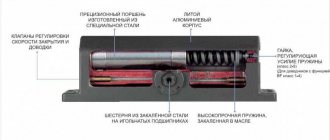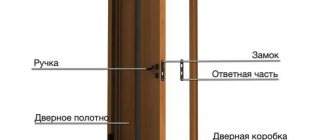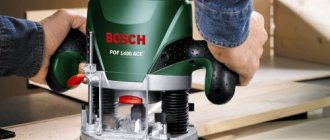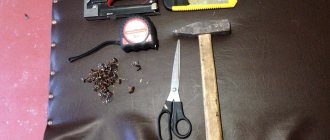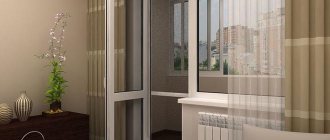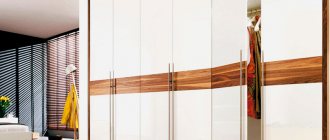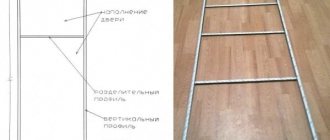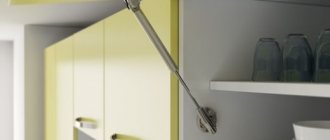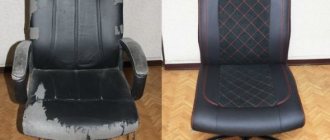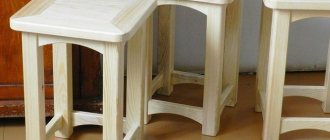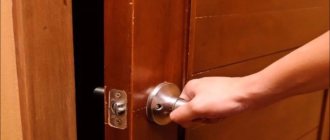A door closer is a mechanism that is designed to reliably close entrance doors. It presses the blade against the seals along the contour or creates the necessary force sufficient to trigger the lock latch. The door can close abruptly and with a sound, or smoothly and without making sounds, and can also pause.
Adjusting the door closer is a mandatory measure to extend the service life and maintain the performance characteristics of the mechanism.
It is subject to constant loads; frequent closing and opening of the door leads to imbalance of the elements of the device, and therefore requires periodic maintenance and repair, both for preventive purposes and if necessary.
Types of door closers
To understand the configuration issue, you first need to familiarize yourself with its classification.
They come in 2 types:
- Cam slide. It is used for smooth closing of blocks in lightweight structures.
- Toothed lever. Used for heavy fabric with codes, considered the most common.
According to the installation method, closers are divided into the following types:
- Top or overhead. Installation is carried out from above the structure.
- Floor-standing. Often attached to the bottom of blocks.
- Hidden or framed. They are located inside the frame or in the floor.
What to do if nothing works out?
There are several reasons why the setup may not produce results:
- An inappropriate mechanism has been selected, the door is too heavy, and heavy objects are frequently hung on the door leaf.
- Incorrect fastening of the iron angle, misalignment of parts.
- Displacement of the holes for the screws on which the device is attached, unscrewing.
If one of the above points applies, then there are only two options - change the door, install a different closer. There is a third option - try to fix it yourself, but lack of experience can lead to worsening.
The lever must be positioned strictly perpendicular to the canvas, otherwise one of the parts must be moved.
When adjustment is needed
Experts recommend adjusting the mechanism immediately after installing the door closer, and not only during operation of the doors. Inspection and correction of minor problems is carried out at least 2 times a year, with frequent fluctuations in temperature indoors and outdoors - more often. This is due to the fact that the lubricating fluid depends on the temperature parameters of the environment and affects the parts of the closer.
Carrying out seasonal adjustments is a regular part of maintenance.
With large temperature fluctuations, the front door mechanism quickly wears out and becomes faulty. Therefore, it is better, when the first signs of damage to the closer occur, to pull it to the desired position, check the tightness to detect oil leaks and eliminate the malfunction.
In case of complex breakdowns, adjusting the door closer on your own is ineffective. Experts recommend carrying out repair work or replacing it.
If problems arise with the device settings, the parameters are adjusted. This procedure is performed if the mechanism turns out to be difficult to open, as well as with a door that closes quickly and sharply or takes a long time to pull.
Signs of malfunction and causes of failure
We must not forget that the door closer is a complex device. Therefore, repairing it is not always possible. In some cases, it is, of course, possible to repair it - but it will be very expensive. Frequent defects are:
leakage of working fluid;
If the closer opens slowly, it needs to be adjusted. A pair of screws are used for this purpose; both need to be adjusted strictly to your needs. Damage may be due to harmful weather conditions. If the temperature constantly changes, if it snows or rains, if the air contains a lot of dust, the structure can easily fail. When the closer does not work or works hard, the breakdown may be due to improper use of the device.
Common mistakes are:
securing the canvas in the open position;
opening the door at an unacceptable angle;
excessive force when opening or closing;
insufficient care of the door closer.
In winter, the operating speed of the closer decreases, and in hot weather it increases. This is due to a change in the viscosity of the working oil. Therefore, when the season changes, additional adjustment of one of the valves is required. If the door closer does not close the door completely, you must first follow the instructions. Along with adjusting the speed, it is often necessary to adjust the intensity of the clap - tighten the spring.
In some cases, the problem is associated with insufficient strength of the device itself. If this is the case, no adjustments will help. Yes, tightening the spring will then give a positive result, but the shelf life of the product will be reduced. It would be much better to purchase a more powerful door closer and replace the existing one. It is important to consider that problems can also be associated with errors during the installation of closers, as well as doors in general.
How to do it right
Adjusting the door closer, the instructions for which provide requirements for installation and adjustment of the mechanism, consists of the following steps:
- Adjustment of block closing speed.
- Setting the parameters for pressing the canvas to the box (latching).
- Adjusting the intermediate stroke.
The procedure requires a minimum of tools - a screwdriver.
How to do it yourself
In order to understand how to adjust the door closer, you need to understand the design features of the device.
The mechanism consists of the following components and parts:
- spring;
- linkage;
- axial gear clutch;
- gear or cam mechanism;
- needle bearing;
- wind brake adjustment valve or damper;
- protective casing;
- lever arm;
- sealing rubber bands;
- adjusting screws;
- fasteners.
When working, you must adhere to the strict rules of the instructions for installing and adjusting the device, which boils down to spring tension.
On the body of the closer, when adjusting, there are 2 adjusting screws, which are responsible for the speed of movement of the blade and the speed of closing. The first screw regulates the main stroke of the door from full opening 180° to 15°, and the second - its final closing. Some models also have a third screw to change the overall force.
The procedure is performed as follows:
- Remove the cover from the mechanism.
- Find the control valve. Check the diagram in the door mechanism instructions.
- Turn screw No. 1 counterclockwise to adjust the doors to close smoothly, clockwise to adjust them quickly. It should be taken into account that more than 2 revolutions from the zero position cannot be made.
- To delay the open door leaf for a certain amount of time, you need to tighten a special lock. Such actions are performed when the block is opened by 95-100°.
- If the canvas needs to be kept open for a long time, use the “Hold-open” function. To do this, open the door 90-95° and tighten the lever lock.
- Check that the mechanism is installed correctly.
Options
When adjusting the door closer with your own hands, significant attention is paid to such parameters as:
- closing force;
- closing speed;
- opening speed;
- maximum opening angle.
Closing speed is how quickly or slowly the doors close. The closing force allows you to adjust the device so that in the last 7-15° the speed increases and the lock latches.
To protect the door block from damage during sudden openings, the opening speed is adjusted. For this purpose, closers with a braking function, such as a “wind brake,” are installed on the entrance doors of buildings.
Adjusting the door closer with your own hands: what is adjustable and what is not
Almost all modern door closers have two or three points that can be adjusted at your discretion - with their help you can not only adjust the operation of this mechanism, but do it in such a way that it is convenient for you to use the doors. That is why the question of how to adjust the door closer is solved not only during operation, but also immediately after installing this device on the door. So what can be adjusted in this device? As a rule, this is the speed of closing the doors, the so-called closing (pressing the door leaf against the frame) and in some expensive models the door speed ranges from 80°-90° to closing. Let's talk about the purpose of such a division in a little more detail.
- Adjusting the door closer - overall closing speed. The closer can be used for doors for various purposes - with equal success it can be installed on both entrance doors and interior doors. You probably already guessed why the overall closing speed is important - for entrance doors it should be higher, since in the summer during this time flies can fly into the house, and in the winter it can get cold. For interior doors, slow closing is more suitable. In addition, one cannot ignore the personal preferences of each person individually and the so-called seasonality.
- Adjusting the intermediate stroke of doors. By adjusting this moment, two issues can be solved simultaneously: firstly, and importantly, for very frequently visited premises, it is possible to ensure the passage of several people in one opening. And, secondly, by fully tightening a special screw, you can ensure that the doors are constantly open.
- Dokhlop and its purpose. Everything is simple here, and it’s not so difficult to guess the purpose of the hit on your own. Agree, at the very least, it would be wrong if the doors hit the frame with all their might - not a single door block can withstand such treatment for long. That is why the finishing touch should be carried out more or less slowly - the manufacturer puts a certain allowable interval into the operation of the product, and you select from it those modes that meet your requirements.
How to adjust a door closer photo
In principle, this is all that can be adjusted in a device such as a door closer. Agree, you don’t need more, because the most important thing is comfortable closing of doors without human intervention.
Adjustment of aftershock
Setting up the door closer to install the door closer ensures that the door leaf adheres to the frame and allows you to leave a small gap before slamming, i.e. does not completely close the door structure. By adjustment, you can adjust the slow closing of the block, reducing the force of the clap.
Using screw No. 2, you can adjust the speed at which the structure will slam shut. When 10-15° remain before the door leaf closes, the deceleration will work.
Operating rules
When operating door closers, you must follow very simple and understandable rules.
The devices do not have various anti-vandal mechanisms, which requires very careful and rather delicate handling of them. After choosing a closer, you need to make sure that its characteristics correspond to the conditions where the device will be installed.
- Closers are divided into classes from small - EN1 to large - EN7. This indicator is taken into account when choosing a device. The classes depend on the mass of the closer itself and inertia: the weight and size of the blade arm. For example, a device designed for a door leaf weight of 40 kg (EN1) will not be able to close a metal door whose weight is 120 kg (EN7).
- Do not assist the device in operation.
- You cannot keep the door leaf open if the mechanism does not have a locking function.
- Do not unnecessarily turn the adjusting screws installed on the valves.
- It is necessary to agree with the equipment seller about left or right opening.
Features of some models
The most common door closers among users are “Dorma” TS-68, “Diplomat”, “GEZE” TS 4000. Each model has its own characteristics of regulating such devices.
"Dorma" TS-68 is a classic top-mounted model. Its peculiarity is that the mechanism is equipped with a special lever to change the door locking force.
The Diplomat model is characterized by simple installation and maintenance of the mechanism. Adjusting the door closer includes the stages of spring tension and opening and closing adjustments. Some modifications of the “Diplomat” do not have a clap setting. The devices operate on the principle of hydromechanics.
"GEZE" TS 4000 is a popular top door mechanism model among users. The closer can adjust the opening damping, adjust the thermostable closing speed at the front and the final closing using a lever rod.
Installation methods
Before setting up the door closer at the entrance, it must be securely fastened. There are two options for installing such devices: classic and parallel.
In the first case, the main mechanism of the device and the rods are fixed to the door frame and the leaf from above. To do this, holes are made in the required places for the template, then the mechanism is fixed using self-tapping screws. In the second case, the parallel lever is fixed using a special metal angle.
Depending on the door design and the placement of the hinges, two automatic closing mechanisms can be installed at the same time if one is not enough to perform these functions. But it is recommended to purchase one more powerful closer.
